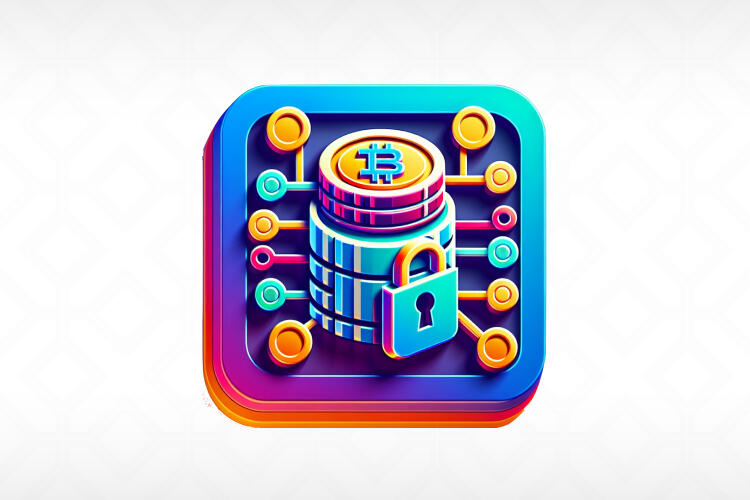
In staking, your digital assets are locked from use while you engage in various blockchain actions such as validating transactions and securing the network. Your reward for the contribution is a larger number of tokens or part of transaction fees. Contrary to traditional interest collection mechanisms, staking allows you to retain ownership of your coins while receiving passive income.
Coinscipher’s APYcalculator crypto gives you more information on how staking rewards are calculated. If you ever wondered how much staking your crypto could yield, here is a guide to the benefits of stake.
Difference of Staking Rewards and Other Yield Strategies
A common comparison is the proportion of staking to other yield methods, especially in terms of decentralized finance (DeFi) approaches such as yield farming. The following are the differences and commonalities between staking rewards and these other yield mechanisms.
1. Ownership and Control
- Staking Rewards — With staking, users are able to maintain ownership and control of their digital assets. With the locked coins, users keep their custody while providing safety to the network and receiving incentives.
- Yield Farming — In yield farming, liquidity is given to decentralized protocols, and assets are offered as mortgages. The users receive benefits in the shape of governance tokens alongside a share from trading fees.
2. Nature of Rewards
- Staking Rewards — Their reward in staking on the blockchain is its native token. It may include newly created tokens, part of transaction fees, and so on.
- Yield Farming — Yield farmers earn governance tokens. These tokens can offer voting rights for protocol decisions but hold no intrinsic monetary value.
3. Risk and Complexity
- Staking Rewards — Staking is generally considered a lower-risk strategy. It is easy for users to earn rewards by helping secure the network.
- Yield Farming -Governance tokens are unpredictable, making Yield farming riskier. Besides, users need to complete different DeFi protocols by smart contracts and liquidity pools which cause a lot of complexity as well as risks.
4. Use of Funds
- Staking Rewards — Securing and decentralizing blockchain networks, staked funds play a critical role. The more stakers, the stronger the network becomes.
- Yield Farming — The yields are allocated to liquidity pools, which is where decentralized exchanges operate successfully.
5. Long-Term vs. Short-Term Strategies
- Staking Rewards — Staking is seen as a long-standing strategy, where rewards are received for an extended period. The longer the staking period, the greater the rewards compound.
- Yield Farming — Liquidity is very important for DEXs, but yield farming has no significant impact on the security and decentralization of the underlying blockchain network.
6. Security and Decentralization
- Staking Rewards — The essential element of the consensus mechanism is staking participation as validators in security and decentralization issues.
- Yield Farming — While liquidity is crucial for DEXs, yield farming does not necessarily influence the security and decentralization of the underlying blockchain network.
How Staking Rewards Are Calculated
The parameters that define the staking rewards include protocol-specific factors, duration of staking, and the current rate of staking rewards. The formula commonly used for calculating staking rewards is:

Where:
- A is the total accrued interest (staking rewards).
- P is the principal staking amount.
- r is the Annual Percentage Yield (APY) in decimal form.
- n is the number of compounding periods per year.
- t is the number of years staking.
This formula considers the compounding effect on staking rewards, providing a more accurate representation of potential earnings over time. The key inputs, such as principal, APY, and staking duration, influence the calculated total interest and future value of staked assets.
Using APY Calculators in Crypto Staking
To simplify the process of estimating potential staking returns, crypto enthusiasts often turn to APY calculators. The mentioned tools consider the number of staked coins, time frame of staking, and current reward rate to give users a clear prediction about future earnings.
APY calculators provide users with a convenient tool allowing them to make data-driven decisions and improve their staking strategies. By changing the values of the input variables, people can analyze various scenarios and determine how their earnings might be affected.
Why Is Choosing the Right Protocol for Staking Important
Selecting the appropriate protocol for staking is a huge decision that significantly influences the potential rewards and overall experience of crypto staking. The importance of protocol selection cannot be overstated as each blockchain network operates under distinct reward structures and mechanics.
1. Reward Mechanics
Different blockchain protocols employ varying reward mechanics. How rewards are distributed, whether through block rewards or other mechanisms such as transaction fees for the estimation of potential earnings, should be clearly understood. Some protocols may offer higher or more consistent rewards based on their specific reward structures.
2. Tokenomics
Each blockchain has a native token that is the main factor in staking rewards. To analyze the tokenomics of a protocol, one needs to look at the total supply, inflation rate, and how staking affects distribution. The consideration of the token price upside potential in addition to staking rewards improves the value proposition.
3. Network Security and Stability
The validators and stakers also have an immediate impact on the security and stability of the blockchain network. The choice of protocol that depends on a great community of validators improves on security and resilience of blockchain. Analyzing the governance structures and decision-making procedures in this protocol also provides insights into its sustainability.
4. Governance Opportunities
While other protocols offer governance tokens as a part of staking rewards, allowing users to make decisions in the process. Such an assessment of the governance opportunities attached to staking could be in accordance with users' desires for direct involvement in shaping and evolving protocols.
Guidelines for Protocol Selection
Consider the overarching goals of the protocol, such as scalability, security, and decentralization. Aligning your staking objectives with the protocol's mission can enhance the overall experience.
Stay informed about the protocol's development roadmap and upcoming upgrades. Protocols that actively evolve and address scalability and security concerns may present better long-term staking opportunities.















